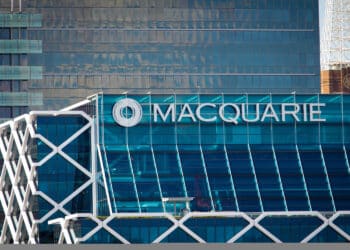Despite numerous concerns about the economic and interest rate outlook, alongside complex geopolitics, the Australian ASX 200 burst through its March record high of 7,897 and then the 8,000 level just this week, after being below 7,000 just last November.
Now AMP’s Shane Oliver expects it to climb to 8,100 on the back of a psychological impact he has termed “roundaphobia”, which, he says, can have the effect of attracting significant investor interest and propelling the ASX 200 even further.
“We have revised up our year-end target for the ASX 200 to 8,100 (from 7,900) reflecting prospects for lower interest rates globally and eventually in Australia boosting the 2025 growth outlook, but in view of the risks around valuations, near-term growth and geopolitics, we are not yet prepared to go further,” said the chief economist.
Delving into the Australian share market’s strength, Oliver said several factors have driven it above the 8,000 level, including renewed optimism about interest rate cuts, alongside signs of a rotation from tech shares to value and cyclical shares which stand to benefit from rate cuts.
The latter, he explained, has been most evident in the US with a resurgence in small caps, with the Russell 2000 small cap index up more than 11 per cent in the last week.
“Reflecting all this along with a lack of the sort of investor euphoria normally seen at major market tops, our assessment is that the Australian share market likely still has more upside on a six-to-12-month view,” Oliver said.
Highlighting the near 15-year period of underperformance by Australian shares, Oliver said that while some of the factors driving this have now waned, some still remain.
As such, he is unwilling to say that the relative underperformance is over.
“Having been too early in anticipating this in the last few years, it is probably too early to be confident that the underperformance is over even though Australian shares offer better medium-term prospects,” Oliver said.
The main risks facing Aussie shares, he said, include the possibility that the Reserve Bank will hike again, the fact that valuations are stretched with Australian shares offering their lowest risk premium over bonds since 2010, and the still high risk of recession.
Also cited by Oliver as key concerns are risks around the Chinese economy and high geopolitical risks.
On the latter, of particular concern is the increasing likelihood that Donald Trump will be the next president in the US.
“Betting markets now put Trump’s chance of winning at 67 per cent at a time when his policies threaten a new trade war far bigger than that seen in 2018 which would threaten global growth and potentially boost inflation. As a small trading nation, Australia would be vulnerable,” Oliver said.
He further cautioned of a “high risk of a correction” in the August to September period, particularly if investors factor in the more negative economic implications of a Trump victory.
At close on 17 July, the ASX 200 stood at just under 8,060.







